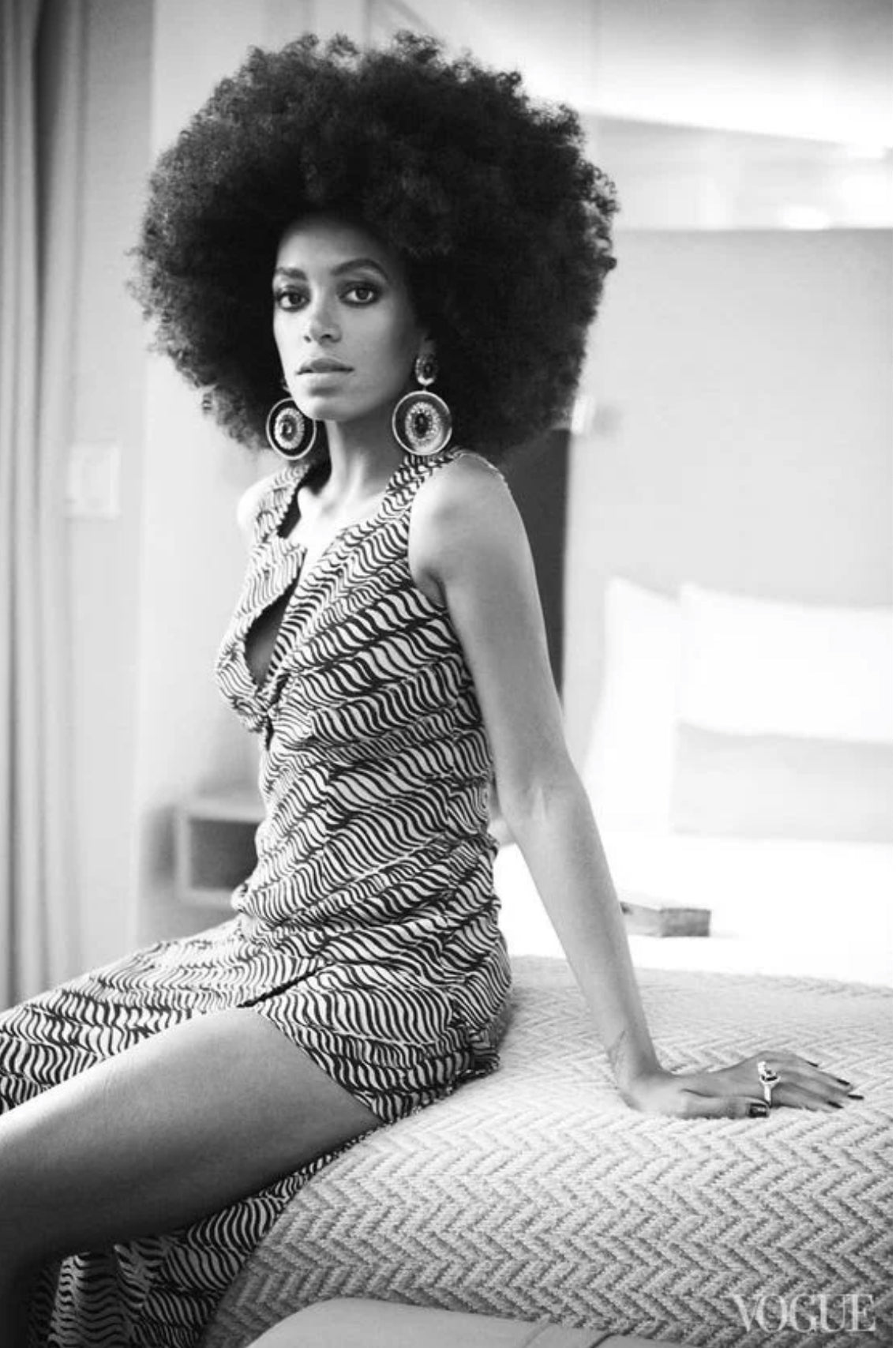Hair played a fundamental role in Black History. It was a form of communication and survival during slavery: women braided routes in their hair and hid seeds.
The beginnings of the “Afro”.
In the 1950s black women were expected to straighten their hair by coating it with protective pomade and combing it with a heated metal comb. But in the late 1950s a group of black female dancers and jazz singers broke the rules and wore unstraightened hair - the famous "close-cropped."

 Solange
Solange
The Afro's cultural trajectory is fascinating. In the early 1970s, it was perceived as a political statement and did not appear in any beauty advertisements. This changed with the arrival of films like Shaft and Coffy and musical groups like The Jackson 5.
Since the early 2000s, it’s called ‘The Natural Hair Movement’ - the refusal to process one’s hair and Black pride but also about having healthy hair. The movement is about embracing the natural beauty and embracing our crowns.
 Angel Davis
Angel Davis
There is no natural hairstyle more glorious or expressive than this.

